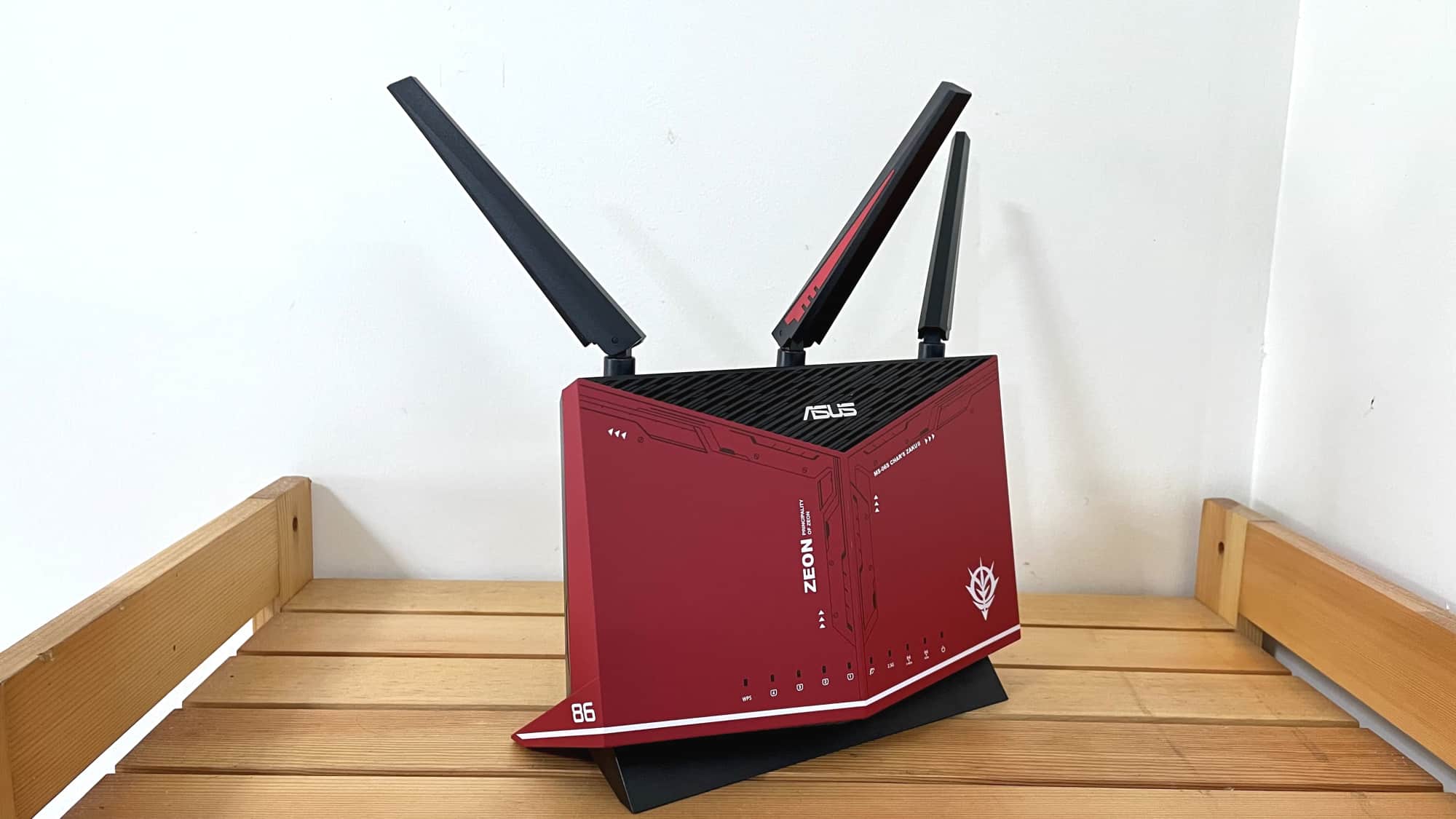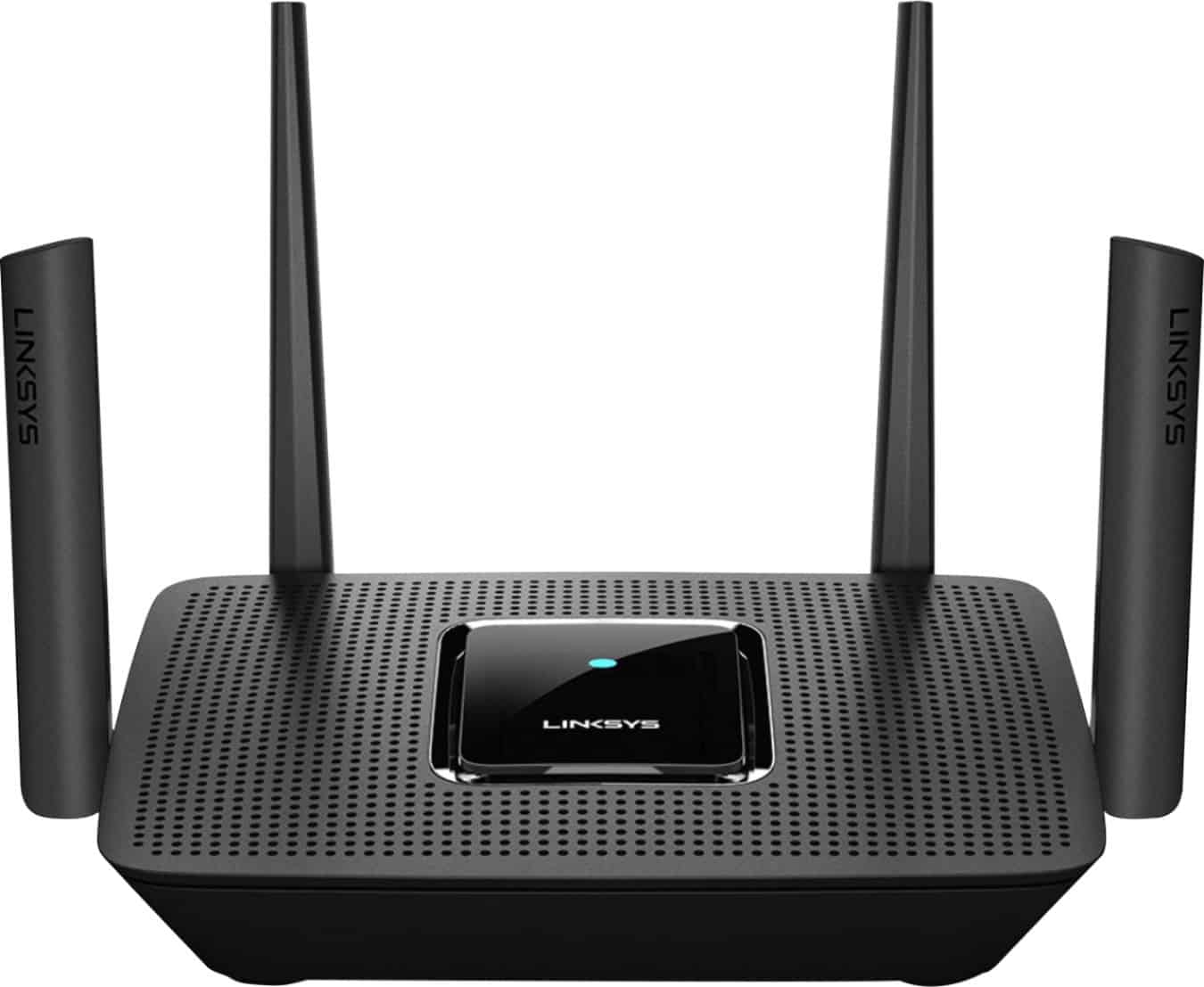Your internet service provider might offer you a wireless router as part of your internet service, however, the best Wi-Fi routers to guarantee the quickest and most secure internet connection speeds might not be the one provided with your service. For a solution to this problem, see our list of 5 best Wi-Fi routers for gamers and streamers:
1. ASUS AX5700 Wi-Fi 6 Router (RT-AX86U Zaku II Edition):

This is a useful router that can guarantee connection speeds up to 5700Mbps, using Wi-Fi 6 (802.11ax) and 160MHz channels.
Must Read: 5 Best Routers For Fiber Optic Internet
This makes it amazing for gamers who are searching for reduced lag and latency, plus anybody wanting to safeguard their internet usage with the cutting-edge security features provided by ASUS AiProtection Pro.
2. TP-Link Archer AC2600:

This one is available from Amazon for less than $100, and it provides a data transfer rate up to 2300 megabytes per second (using Wi-Fi 801.11ac). Even if it is not the quickest and cutting-edge wireless router available, it is well suited to average internet users who want dependable connections for their several devices.
3. Linksys AC3000:

This one is available on Amazon for as low as $150. It is a tri-band home router that provides signal coverage up to 3,000 square feet on its own or can be linked with multiple nodes (signal extenders) via its Linksys Velop mesh Wi-Fi System capabilities to extend its signal strength up to 6,000 square feet.
4. Net Gear Nighthawk 8-Stream AX8:

Still on the topic of best Wi-Fi routers for gamers and streamers. If you work away from home and you are persistently battling for wireless internet bandwidth with your children who are busy streaming media or gaming, buying this Wi-Fi 6 (801.11ax) router won’t be a bad idea.
Must Read: 5 Best Capture Cards For Recording And Streaming
This option provides a signal strength that covers 2,500 square feet, and it delivers 8 wireless streams (from four antennas). It also offers the ability to connect up to five computers or compatible devices via its Ethernet LAN ports.
5. Google Nest Wi-Fi AC2200 Mesh Wi-Fi System:

With this router, users can place various routers throughout their homes and property to offer a strong signal (with no weak or dead spots) within up to a 6,600 square foot radius. And as you already know, several Google Nest routers set up quickly and work smoothly together.
Must Read: 5 Best Mesh Wi-Fi Routers
The free Google Nest mobile app also makes it simple to set up and manage your home Wi-Fi network, create guest accounts, change your network’s password and use parental controls.
wrapping up: There you have it – a comprehensive list of best Wi-Fi routers for gamers and streamers. Feel free to let us know about your personal favorites and other recommendations in the comment section below.
More Information On Gadgets:
A gadget is a small tool such as a machine that has a particular function, but is often thought of as a novelty. Gadgets are sometimes referred to as gizmos.
In the software industry, “Gadget” refers to computer programs that provide services without needing an independent application to be launched for each one, but instead run in an environment that manages multiple gadgets.
There are several implementations based on existing software development techniques, like JavaScript, form input, and various image formats.
The earliest documented use of the term gadget in context of software engineering was in 1985 by the developers of AmigaOS, the operating system of the Amiga computers (intuition.library and also later gadtools.library).
It denotes what other technological traditions call GUI widget—a control element in graphical user interface. This naming convention remains in continuing use (as of 2008) since then.
It is not known whether other software companies are explicitly drawing on that inspiration when featuring the word in names of their technologies or simply referring to the generic meaning. The word widget is older in this context.
In the movie “Back to School” from 1986 by Alan Metter, there is a scene where an economics professor Dr. Barbay, wants to start for educational purposes a fictional company that produces “widgets: It’s a fictional product.”



